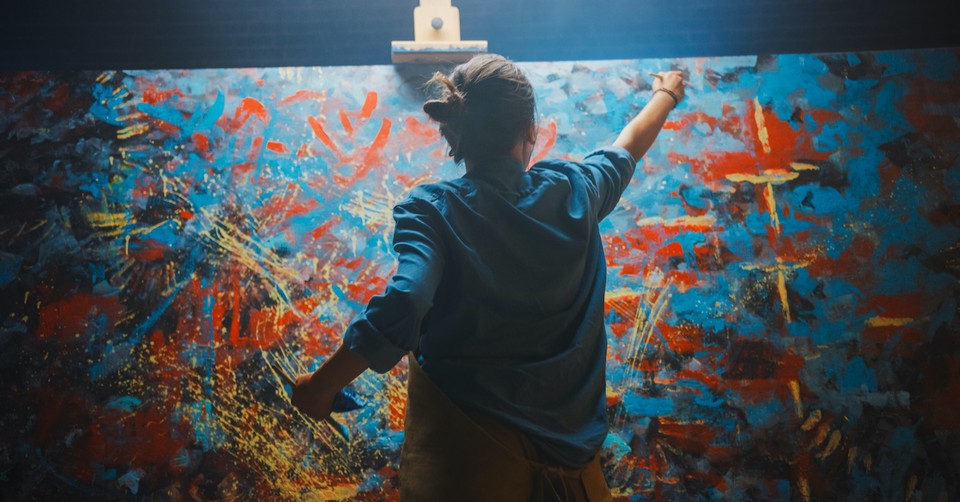Art is one of the most powerful forms of human expression, offering a unique way to communicate emotions, ideas, and experiences. It transcends language, culture, and time, leaving an indelible mark on history. Whether through painting, sculpture, music, dance, or other forms, art has the power to evoke emotions, challenge perceptions, and inspire change. In this article, we explore the significance of art, its impact on society, and the role it plays in our lives.
1. What is Art?
Art can be defined as a diverse range of human activities that involve the creation of visual, auditory, or performance artifacts that express the creator’s imagination, conceptual ideas, or technical skill. Art can be a way of communicating something that cannot be said in words, capturing complex emotions, or exploring the world around us in ways that challenge or inspire.
The definition of art is constantly evolving, and its forms are nearly limitless. Some of the main categories of art include:
- Visual Art: Painting, sculpture, photography, drawing, printmaking, and digital art.
- Performing Art: Dance, theater, music, and film.
- Literary Art: Poetry, novels, short stories, and essays.
- Applied Art: Design, architecture, and crafts.
2. The Purpose of Art
Art has served many purposes throughout history, and its functions continue to evolve. The primary purposes of art can be summarized as follows:
- Expression: Artists use their work as a form of self-expression to communicate their inner thoughts, feelings, and beliefs. Through art, individuals can convey experiences that may be too complex or difficult to articulate with words.
- Aesthetic Experience: Art has the ability to engage our senses and create beauty, providing viewers with a sensory experience. This aesthetic experience can evoke emotions, whether it’s joy, sadness, awe, or contemplation.
- Cultural Reflection: Art reflects the cultural, social, and political climate of its time. By studying art, we can gain insight into historical events, societal norms, and cultural values. Artists often serve as commentators or critics of the world around them, using their work to address pressing issues such as politics, inequality, and war.
- Communication: Art allows for communication across barriers of language and time. Whether through a painting, a piece of music, or a performance, art provides a universal language that can be understood by people from diverse backgrounds.
- Inspiration and Motivation: Art inspires people to think differently, challenge the status quo, and engage with the world in new ways. It can motivate change, raise awareness for causes, or provide comfort and solace during difficult times.
3. The Impact of Art on Society
Art is not just an individual pursuit—it has a profound impact on society as a whole. Throughout history, art has played a key role in shaping culture, influencing politics, and challenging established norms. Here are a few ways art impacts society:
1. Preserving History
Art acts as a time capsule, preserving moments of history for future generations. Paintings, sculptures, and other forms of art offer glimpses into the past, allowing us to understand historical events, traditions, and the daily lives of people from different periods. For example, ancient cave paintings or Renaissance works provide a window into the values, beliefs, and technological advancements of their time.
2. Promoting Social Change
Many artists use their work to raise awareness about social issues and spark movements. Art has often been at the forefront of social justice campaigns, challenging established norms and pushing for change. For instance, works by artists like Picasso and Goya depicted the horrors of war, while contemporary artists address issues like climate change, racial equality, and LGBTQ+ rights.
Art can unite people in a shared purpose, motivate action, and serve as a catalyst for social transformation.
3. Economic Contributions
Art is also an important economic driver. The art industry generates billions of dollars annually, supporting countless jobs in galleries, museums, design firms, theaters, and more. Art tourism, the buying and selling of artworks, and the creative industries all contribute to local and global economies.
4. Fostering Cultural Understanding
Art is a bridge that connects different cultures. Through art, people can gain insights into other traditions, values, and ways of life. International art festivals, exhibitions, and performances provide opportunities for cross-cultural exchange, fostering global understanding and respect.
4. The Role of Art in Personal Life
Beyond its impact on society, art also plays a significant role in personal growth and well-being. Here’s how art enhances our lives:
1. Personal Expression
Art allows individuals to express themselves in a way that is often more profound than words can capture. Whether it’s through painting, writing, music, or dance, creating art provides an outlet for personal expression and self-discovery. It can be therapeutic, offering a safe space to process emotions, reduce stress, and explore one’s inner world.
2. Emotional Impact
Art has a unique ability to evoke powerful emotions. A piece of music, a painting, or a poem can stir feelings of joy, sorrow, nostalgia, or hope. This emotional connection is one of the reasons why art has such a lasting impact on individuals. It can also serve as a form of catharsis, helping people work through difficult experiences or emotions.
3. Cognitive and Developmental Benefits
Engaging with art—whether by creating it or experiencing it—has numerous cognitive benefits. It enhances creativity, problem-solving skills, and critical thinking. For children, exposure to art helps develop fine motor skills, language abilities, and emotional intelligence. Art encourages curiosity and fosters an open mind.
4. Healing Power
Art therapy is a recognized form of treatment that uses art as a tool for healing. This form of therapy has been shown to help individuals cope with trauma, anxiety, depression, and other mental health conditions. Creating or observing art can provide a sense of calm and clarity, offering a way to navigate complex emotions.
5. Types of Art Forms
Art can be found in many forms and can be categorized in various ways. Some of the most recognized art forms include:
1. Painting
One of the oldest and most beloved art forms, painting uses various mediums—such as oil, acrylic, watercolor, and more—to create visual compositions. Famous examples include the works of artists like Leonardo da Vinci, Vincent van Gogh, and Frida Kahlo.
2. Sculpture
Sculpture involves the creation of three-dimensional works of art, typically from materials like stone, metal, clay, or wood. Famous sculptors include Michelangelo, Auguste Rodin, and Barbara Hepworth.
3. Photography
Photography captures moments in time, preserving them in a visual format. It can range from fine art photography to documentary photography, each with its unique style and purpose. Notable photographers include Ansel Adams, Diane Arbus, and Henri Cartier-Bresson.
4. Music
Music is a universal form of art that uses sound, rhythm, and melody to create emotional and intellectual experiences. From classical compositions to modern pop songs, music has the power to move and inspire. Famous composers include Ludwig van Beethoven, Johann Sebastian Bach, and contemporary musicians like Beyoncé and Kendrick Lamar.
5. Literature
Literary art involves the written word, from poetry to novels and short stories. Literature explores the human experience through characters, narratives, and themes. Famous authors include William Shakespeare, Jane Austen, Gabriel García Márquez, and Toni Morrison.
6. Dance and Theater
The performing arts, including dance and theater, use movement and performance to tell stories, express emotions, and entertain. Renowned dancers and choreographers include Martha Graham and Misty Copeland, while theater icons include William Shakespeare, Lin-Manuel Miranda, and August Wilson.
6. Conclusion
Art is a fundamental part of the human experience, enriching our lives and shaping the world around us. It is a tool for expression, reflection, and communication, offering endless possibilities for creative exploration. Whether creating art or appreciating it, engaging with artistic works allows us to connect with others, understand the world better, and, ultimately, enrich our own lives.
As we continue to evolve, the role of art will remain central in shaping our cultural identity, personal well-being, and societal progress. Art encourages us to think critically, embrace new perspectives, and be inspired to create change.

